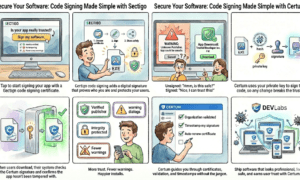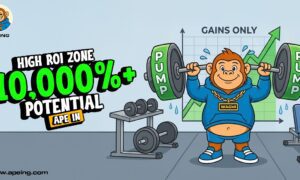The past few years have been tough on the concert and live events industry. After being shut down completely during the COVID-19 pandemic, the industry faces new economic challenges as it tries to rebuild and get back on its feet. Inflation and rising interest rates have made touring more expensive for artists and led to higher ticket prices for fans. This article explores how inflationary pressures and rising rates impact concert tours and tickets in 2022 and 2023.
Inflation Driving Up Costs of Touring
With inflation in the U.S. reaching its highest level in 40 years, artists and concert promoters are seeing their costs go up across the board. From transportation to equipment rental to staff wages, the price of taking an act on the road has increased markedly.
Some specific areas where inflation is hitting the hardest:
Fuel costs – With gas prices up over 60% from last year, the cost of powering tour buses and equipment trucks has skyrocketed. For an arena tour with a fleet of vehicles, this can mean hundreds of thousands in extra fuel expenses.
Airfares – As jet fuel prices have surged, so have flight costs. For bands flying to tour stops, this cuts into slim profit margins.
Hotels – Accommodation is a major expense for travelling tours. Inflation has driven hotel room rates, with prices up nearly 40% from 2021.
Equipment rental – From sound systems to lighting rigs, rental costs for tour gear have gone up 15-20%. Shortages have also made key equipment harder to find.
Food and beverages- Catering and craft service prices have risen along with grocery store prices. A 10%+ increase makes keeping bands and crews fed a pricier endeavour.
Insurance – Policies that cover gear, vehicles, and liability have risen by 25-35% in the inflationary environment. Another big line item on tour budgets.
Wages – With open positions abundant, road crews have leverage to demand higher pay. Labour shortages also require more hiring.
The cost of mounting a concert tour has risen 15-20% generally YOU. Promoters and artists are getting squeezed unless they can raise ticket prices.
Higher Interest Rates Limiting Investment in Tours
Along with inflation, the Federal Reserve has aggressively raised interest rates in 2022 to cool the overheated economy. Higher rates make financing and investing in concert tours more expensive.
Most tours are funded by loans later paid back via ticket sales and merchandise revenue. The prevailing rate hikes mean:
Promoters and artists pay more to borrow capital needed upfront to mount tours.
Investors earn lower risk-adjusted returns by lending to fund tours.
Higher interest costs must be recouped from tours to repay investors.
Simply put, higher rates discourage investment in new tours by decreasing potential returns. Funding could dry up for smaller and medium-sized artists if rates remain elevated, limiting touring opportunities.
Even big-name artists capable of funding tours from their pockets face steeper opportunity costs. With safe Treasury yields over 4%, the incentives shift away from risky touring investments.
The bottom line, rising interest rates throw up roadblocks to financing concert tours, driving down supply.
How Are Ticket Prices Being Impacted?
With tours getting more expensive and higher financing costs, promoters and artists have increasingly passed those added costs onto consumers via ticket prices.
Some observations on how concert ticket prices are being impacted according to Barry’s Ticket Service, CDO Chris Cabrera:
Big increases for top artists- Marquee names like The Rolling Stones, Elton John, and The Weeknd have hiked ticket prices 25-30% versus pre-pandemic tours. Front-row seats are frequently over $1,000.
New premium packages- To boost revenues, promoters are adding more VIP experiences like meet-and-greets that fetch higher price points from superfans.
Fees on the rise – Handling, facility, and order processing fees tacked onto every ticket routinely add 25-30% at checkout. Compared to 2019, fees are up.
Nosebleeds are not immune – Even the cheap seats are seeing inflationary pressure. Upper deck/lawn tickets selling for 20-30% more versus comparable seats in 2019.
Smaller artists feeling pinch – Rising costs are making it tougher for concert promoters to keep tickets accessible for lesser-known emerging acts. Expect higher club ticket prices.
While tickets for the biggest tours skyrocket, even more modest artists are forced to charge fans more. Consumers are paying the price for mounting inflation and rising interest rates.
Will Demand Support Higher Ticket Prices?
As concert tickets get more expensive across the board, there’s a risk that some fans get priced out of the market. Yet early indications point to robust demand even at higher price points:
Pent-up demand post-COVID – After 2+ years stuck at home, consumers are eager to get out and have live experiences again. FOMO outweighs price sensitivity for many music lovers.
Lots of household savings – Americans built up excess savings during COVID shutdowns. Those with bigger discretionary budgets can afford higher ticket prices.
Refunds converted to credits – Fans who got refunds for cancelled 2020-21 shows often took credits redeemable for future tickets. It may incentivize buying regardless of current prices.
Lower tour supply – Fewer concerts and tours in the market due to financing constraints. Scarcity allows pricing power.
Diehard fans – For top artists, a sizable base of hardcore devotees will pay almost anything to attend shows of beloved acts. Their demand is inelastic.
VIP experiences – Affluent fans drive premium purchases for unique access and elite treatment.
While inflation and rates present real challenges for the concert industry, fan demand appears strong enough to absorb higher ticket prices. Promoters are devising creative pricing strategies to extract maximum revenues. But a recession could alter the equation.
What Does It Mean for the Concert Industry?
The bottom line is that rapidly rising costs for touring and financing shows, coupled with still strong consumer demand, are leading to higher concert ticket prices overall. Fans are paying the price for broad economic forces.
Looking ahead, a few implications for artists, promoters, and consumers include:
More expensive tickets are becoming the norm, especially for top acts. Budgeting for pricier shows.
VIP packages and creative upsells driving more revenue. Consider premium add-ons.
Secondary market hot for highly desired shows. Plan ahead and buy early.
Rising costs putting pressure on smaller artists and promoters. Be selective in backing niche acts.
Recession risks if demand falls as household budgets shrink. But concerts are historically resilient.
Ongoing changes as the industry adapts pricing models and offerings to meet changing consumer willingness to pay.
While the live music industry has weathered its ups and downs, the post-pandemic climate presents a unique combination of challenges.
How inflation and rising rates impact tours and ticket prices remains to be seen, but fans and artists must stay flexible. One thing is certain – concert economics are changing in 2022 and beyond.
Conclusion
Inflation and rising interest rates have led to higher expenses for concert tours and funding constraints, driving up ticket prices for live shows.
Music fans are paying 25-30%+ more overall, though demand remains strong as audiences return post-COVID. Promoters and artists are getting creative with premium experiences and special packages to boost revenues.
The outlook will remain fluid as the industry balances costs with consumer willingness to pay amid shifting economic conditions. While the passion for live events persists, everyone must adapt to the new price realities.





























